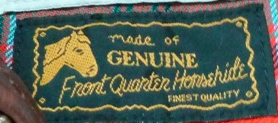guygardner
A-List Customer
- Messages
- 335
- Location
- Canada
Just got this and was wondering if it looks like horsehide (and if it's possible to tell what kind of leather you have by appearance):
http://www.ebay.ca/itm/260970944100?ssPageName=STRK:MEWNX:IT&_trksid=p3984.m1497.l2648#ht_6370wt_907
I've read that goatskin doesn't show wear or grain as much as horsehide, and doesn't discolor as much, but what about cowhide and steerhide vs horsehide?
http://www.ebay.ca/itm/260970944100?ssPageName=STRK:MEWNX:IT&_trksid=p3984.m1497.l2648#ht_6370wt_907
I've read that goatskin doesn't show wear or grain as much as horsehide, and doesn't discolor as much, but what about cowhide and steerhide vs horsehide?

